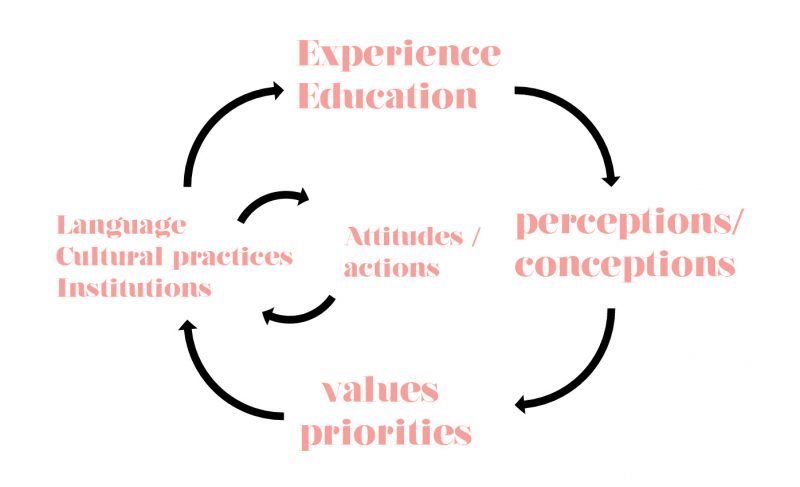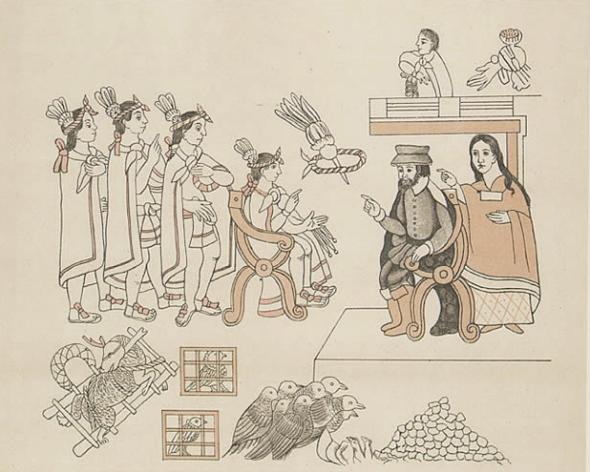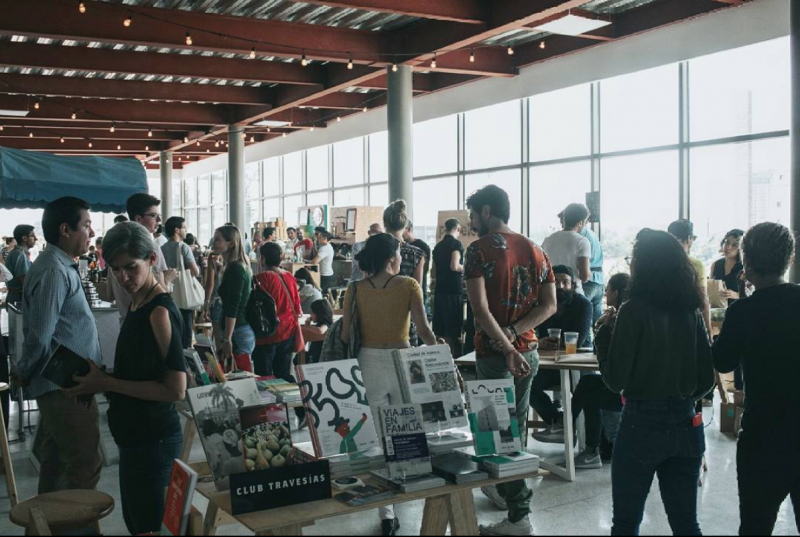(MIS) CONCEPTIONS INHERITED FROM COLONIZATION
Posted on December 21, 2017While colonizing countries often bring the conversation of colonization and de-colonization, its implications and effects; in general or of specific areas such as education, academy, design, from my experience, living in country that was colonized, made me realize that for a very long time, this conversation was not as frequent as needed and not considered as important as it is. In the first years of education, we were thought about the history of our country, which were the first civilizations living here, the time when it was colonized and how was this process. It is clear for us which are our roots; a fusion of two cultures, with a predominant one. But in spite of become an independent country long time ago, many people were and some still not totally aware about the attitudes taken in this process as oppression and imposition and the effects that still affects our culture.
While studying my undergrad; Innovation and Design Engineering, I barely remember students and professors questioning where does pre-hispanic design takes place in design history: mostly all the books of art and design history are full of European design movements and there is a point where they can move to colonized countries (when they were already colonized), and still mostly all trends and movements come from colonizing countries. We were accepting that as presented, without claiming a place for our design and having the (mis) conception that our ancestors design can´t have the same value as European´s or American´s design. As Margaret Andersen says: The issue starts with the design narrative that many schools have adopted, prioritizing European art and design histories as the key pedagogical source over non-Western design lineages1.
As well as the issue of design colonization starts with the design narrative, as Dr. Joanna Boehnert and Dimeji Onafuwa mentioned in Design as Symbolic Violence:
Reproducing the ‘isms’ other issues starts with priorities, values and even sensibilities which are reproduced through cultural practices, processes and institutions2, and sometimes these values and priorities have been based in perceptions created by past experiences. From the process of colonization, the Mexican adopted a series of perceptions, which I would like to call (mis) conception because they are perceived incorrectly. These (mis) conception are reflected in our language and attitudes and are the roots of many problems we faced or still facing everyday. In the next paragraphs I would like to talk about some of these (mis) conceptions.

First the(mis) conception that there are different levels of people, for example for many Mexicans the foreigner is at a higher level than us, which can be taken as an advantage from the point of view of the foreigner: is always, or almost always going to be treated as a king while visiting places in México. From this attitude comes the term Malinchista which applies to all those who feel an attraction to foreign cultures and disregard for their own national culture, it also refers to deep-rooted Mexican inferiority complex or self-hatred for the preference for all things foreign to the point of self-destruction.3 This term was created after the history of La Malinche, a native American woman who was given to Spanish as slave and who became Hernán Cortes translator and advisor. She is symbol of betrayal for assisting Spanish to destroy Native Americans way of life, values, norms and culture.4

La Malinche and Hernan Cortes
Another (mis) conception is the idea of that people can be divided in classes;which is related with the first (mis) conception mentioned. Again, Mexicans who have a foreigner origin or higher income normally feels that are at a higher level, which turn into Classism; a phenomenon very common in Mexico that segregates population and creates barriers between. Also there is the (mis) conception related to the value of people in terms of beauty standards: European features are considered prettier; for example there is a region in Mexico, which is famous becauseof the pretty girls that live there and its attributed to the European colonies that were settle in that region. This perception again is excluding natives to fit in the categories of attractiveness, giving them less value and creating barriers. Although, this is not only perceived in Mexico, it is also a perception present in many places in the world created by the media, better said: colonized by media.
There are also (mis) perception of what we consume: some years ago, products from other places were chosen over Mexican ones, first because there was the idea that the quality of these objects was not as good as foreigner products (and at some point was true, in the next paragraph I´m explaining why) and the idea that owning a product from an international brand gives people more status and level. About traveling, going to another country was seen as cool and giving more value to people while traveling inside Mexico was considered not so cool. Media consumption was very similar; mostly all of consumed media use to come from United States.
The last (mis) conception I would like to bring which we faced in the past and sometimes still facing (because I see that every time less present) is the perception of ourselves as not being capable of creating: Of creating knowledge; just two universities in Mexico are ranked among the 200 best universities and just one is have a very high level of research (according to international rankings) 4. This is linked to the lack of recognition of the colonization of Academy; by believing all the knowledge provided and created by European roots is the truth. Also the (mis) conception of not capable of creating quality products, companies, etc. This lack of confidence and belief that we are not going to be enough is one of the most powerful (mis) perceptions that if its changed can leverage a lot of potential contained in people.
But in spite of this heritage from colonization, lately there has been a wave of movements and people who are slowly changing these (mis) conception: that encourage people to believe more in Mexico: entrepreneurs creating start ups, designers creating great quality products, people preferring locally made products, creative and talented people been recognized internationally, and valuing all the culture and richness of the country. Even if there still a lot to do and these small changes are slow, are empowering people and breaking with colonizing tendencies, driving the country to a different and better direction.


La Lonja, design fair in Mexico City, created since 7 years ago
Mariana González
1Margaret Andersen , Why can´t the U.S. Decolonize its Design Education?
https://eyeondesign.aiga.org/why-cant-the-u-s-decolonize-its-design-education/
2 Design as symbolic Violence: Reproducing the ‘isms’ + A Framework for Allies
Dr. Joanna Boehnert, Dimeji Onafuwa
3 https://en.wikipedia.org/wiki/Malinchism
4 https://en.wikipedia.org/wiki/Malinchism